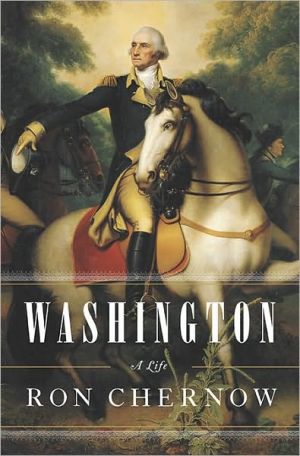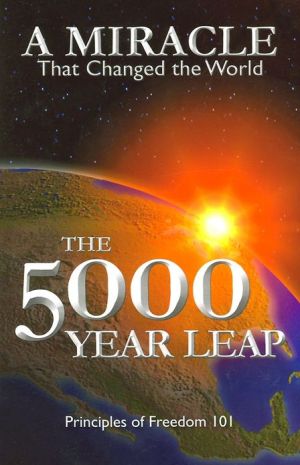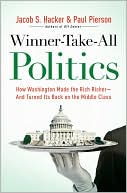The Most Activist Supreme Court in History: The Road to Modern Judicial Conservatism
When conservatives took control of the federal judiciary in the 1980s, it was widely assumed that they would reverse the landmark rights-protecting precedents set by the Warren Court and replace them with a broad commitment to judicial restraint. Instead, the Supreme Court under Chief Justice William Rehnquist has reaffirmed most of those liberal decisions while creating its own brand of conservative judicial activism.\ Ranging from 1937 to the present, The Most Activist Supreme Court in...
Search in google:
When conservatives took control of the federal judiciary in the 1980s, it was widely assumed that they would reverse the landmark rights-protecting precedents set by the Warren Court and replace them with a broad commitment to judicial restraint. Instead, the Supreme Court under Chief Justice William Rehnquist has reaffirmed most of those liberal decisions while creating its own brand of conservative judicial activism.Ranging from 1937 to the present, The Most Activist Supreme Court in History traces the legal and political forces that have shaped the modern Court. Thomas M. Keck argues that the tensions within modern conservatism have produced a court that exercises its own power quite actively, on behalf of both liberal and conservative ends. Despite the long-standing conservative commitment to restraint, the justices of the Rehnquist Court have stepped in to settle divisive political conflicts over abortion, affirmative action, gay rights, presidential elections, and much more. Keck focuses in particular on the role of Justices O'Connor and Kennedy, whose deciding votes have shaped this uncharacteristically activist Court. Choice Choice Outstanding Academic Title, 2006
THE MOST ACTIVIST SUPREME COURT IN HISTORY \ THE ROAD TO MODERN JUDICIAL CONSERVATISM \ \ By THOMAS M. KECK \ The University of Chicago Press \ Copyright © 2004 Thomas M. Keck\ All right reserved.\ ISBN: 978-0-226-42884-0 \ \ \ \ \ Chapter One \ THE NEW DEAL REVOLUTION AND THE RECONSTRUCTION OF CONSTITUTIONAL LAW 1937-1949 \ Though modern judicial conservatism has roots that reach back to the adoption of the original Constitution, its principal lines of development began with the founding moment of modern constitutional law, the New Deal "switch in time" of 1937. By that time, the pre-New Deal Court's active enforcement of constitutional limits on state and federal legislative authority had led many judges and scholars to conclude that such sweeping judicial power was illegitimate in a democratic political system. As President Franklin D. Roosevelt's appointees took over the Court during the late 1930s, they abandoned the preexisting constitutional conceptions of limited government-rooted primarily in notions of federalism and property rights-in order to legitimize the modern welfare-regulatory state. Having done so, they would either have to abandon the idea of judicially enforceable limits on government power altogether, or else reconstruct a new set of foundations for preserving the notion of constitutional liberty in the context of the modern state.\ The Court eventually chose the latter course, marking out a new, modern judicial activism in defense of civil liberties and minority rights, a vision of rights-based constitutionalism that is now firmly entrenched in the American political system. This choice, however, was not fully made until the second half of the Warren era. In the years immediately following the New Deal, the outcome of these constitutional debates was truly in doubt, with pitched battles waged over the future direction of American constitutionalism. In this chapter, I explore the new constitutional foundations marked out by three particularly influential New Deal appointees: Felix Frankfurter, Harlan Fiske Stone, and Hugo Black. Frankfurter insisted that the lesson to be gleaned from the New Deal conflict is that unchecked judicial power is incompatible with democratic governance, and hence that the unelected Court must exercise an extreme form of deference to legislative decisions. Black and Stone agreed that the Court should ordinarily defer to the democratic will on issues of economic regulation, but they each sought to identify a particularly important set of constitutional rights and liberties that the Court should actively protect against infringement by democratic majorities. In this regard, Black emphasized the importance of enforcing the specific provisions of the original Bill of Rights, while Stone sought to protect those "preferred freedoms" (such as the freedom of speech) that are essential to the democratic political process, and to ensure equal treatment for those groups (such as racial minorities) who are likely to be mistreated by elected political institutions. The judicial opinions during the late 1930s and 1940s of Frankfurter, Black, and Stone shaped constitutional debate for the generation that followed, laying key foundations for both modern liberal and conservative constitutionalism.\ In short, during the immediate post-New Deal period, the justices faced a key choice point, with a number of alternative visions of the judicial role available to them. The establishment of modern rights-based constitutionalism was far from inevitable, and the Court's choices at this critical juncture would have far-reaching consequences. Students of political development have often noted that particular decisions at crucial moments can have lasting effects, both intended and unintended. As Paul Pierson and Theda Skocpol have described this process, "[o]utcomes at a critical juncture [can] trigger feedback mechanisms that reinforce the recurrence of a particular pattern into the future.... Political alternatives that were once quite plausible may become irretrievably lost. Thus, events or processes occurring during and immediately following critical junctures emerge as crucial" (2002:699-700). Like all political evolution, constitutional development is a "path dependent" historical process; the particular sequence by which competing norms become entrenched within constitutional discourse has a substantial effect on subsequent events. Once we recognize, with Pierson, that "today's policymakers operate in an environment fundamentally shaped by policies inherited from the past," it becomes clear that ongoing lines of development are sometimes difficult to reverse (1996a : 179, 175; see also 2000a). To understand political order and change, then, it is often necessary to trace the longterm interaction between slow, secular trends, such as the growth of the modern state, and more rapid and cyclical developments, such as the rise and fall of partisan regimes (Skowronek 1993).\ In the constitutional context, it is difficult to specify precisely the significance of entrenched traditions because the justices have a substantial degree of freedom to pick up on one or another such "path" in a variety of contexts. Nonetheless, it is clear that particular jurisprudential traditions at particular historical moments become entrenched in ways that render them resistant to change. Moreover, the particular paths that unfold may change the legal and political terrain in such a way as to alter the preferences of individual legal interpreters. In this light, the key persistent trend in modern constitutional development has been the steady entrenchment of rights-based constitutionalism and the corresponding expansion of judicial power.\ The notion of judicially enforceable liberty is not, of course, new; the American Bill of Rights is over two hundred years old and was itself built upon deep foundations in Anglo-American law. Nonetheless, our contemporary conception of individual liberty and minority rights, enforceable by the unelected judiciary against the wishes of democratic majorities, is in large part a modern development. In the shadow of the New Deal and World War II, the Court, led by Justice Stone in particular, began to articulate judicially enforceable guarantees of free expression, religious freedom, racial equality, and the like. As Gillman has observed, "[h]aving abdicated the responsibility of determining whether legislation was rationally related to a legitimate public purpose, judges created for themselves a new role in the political system, one that involved identifying those 'preferred freedoms' or 'suspect classifications' that might provide a basis for trumping the otherwise unrestrained power of the modern legislature" (1993 :202-3). During this period, Stone and his fellow justices developed innovative conceptions of fundamental rights in an effort to preserve the Constitution's balance between individual liberty and democratic government.\ The New Deal Conflict and the Abandonment of Original Foundations\ Again, however, this rights-based vision did not fully develop until the Warren Court years. When FDR was struggling with the conservative Court over the constitutionality of New Deal legislation, he demanded that the justices defer to the will of the elected institutions. When he proposed his Court-packing plan in 1937, for example, he complained that "[w]hen the Congress has sought to stabilize national agriculture, to improve the conditions of labor, to safeguard business against unfair competition, to protect our national resources, and in many other ways to serve our clearly national needs, the majority of the Court has been assuming the power to pass on the wisdom of these acts of the Congress-and to approve or disapprove the public policy written into these laws." FDR argued that the Court had "improperly set itself up as a third House of the Congress-a super-legislature, as one of the justices has called it-reading into the Constitution words and implications which are not there, and which were never intended to be there." Though Roosevelt lost the Court-packing battle in 1937-his own Democratic allies in Congress rejected his proposal to expand the size of the Court-he won the larger war. Having served a full term already with no opportunity for a Supreme Court appointment, he appointed eight new justices over the next seven years, justices who were fully expected to exercise their power more sparingly.\ FDR's call for judicial restraint had been supported by Justices Oliver Wendell Holmes and Louis Brandeis on the Court, and also by Professor Frankfurter at Harvard Law School, each of whom argued that changing social facts require changing laws and that the Constitution should not be construed to stand in the way of such change. In this sense, FDR and his supporters were calling for the abandonment of original constitutional foundations to allow a much greater degree of judicial deference to the democratic will.\ For Holmes, the Court's stubborn enforcement of long-standing constitutional principles of limited government represented a vain and illegitimate effort to thwart the will of current majorities. In his famous dissent in Lochner v. New York, for example, he chastised the Court for deciding the case "upon an economic theory which a large part of the country does not entertain." He also insisted that "the word liberty in the Fourteenth Amendment is perverted when it is held to prevent the natural outcome of a dominant opinion, unless it can be said that a rational and fair man necessarily would admit that the statute proposed would infringe fundamental principles as they have been understood by the traditions of our people and our law." Dissenting from a decision extending Lochner eighteen years later, Holmes insisted that "[t]he criterion of constitutionality is not whether we believe the law to be for the public good. We certainly cannot be prepared to deny that a reasonable man reasonably might have that belief in view of the legislation of Great Britain, Victoria and a number of the States of this Union," all of which had minimum wage statutes similar to the one at issue in this case. Seven years after that, dissenting in Baldwin v. Missouri, he expressed his "anxiety ... at the ever increasing scope given to the Fourteenth Amendment in cutting down what I believe to be the constitutional rights of the States." In light of the Court's recent decisions, he saw "hardly any limit but the sky to the invalidating of those rights if they happen to strike a majority of this Court as for any reason undesirable. I cannot believe that the Amendment was intended to give us carte blanche to embody our economic or moral beliefs in its prohibitions." In these widely influential dissenting opinions, Holmes elaborated on the views of Harvard's James Bradley Thayer, articulating what would become the modern doctrine of judicial restraint, rooted in a majoritarian conception of American democracy that he carried so far as to threaten an abandonment of constitutionalism itself (Thayer 1893).\ Because this approach represented a significant departure from longstanding constitutional traditions, Holmes sought to justify it by reference to a "living," or evolutionary, conception of constitutionalism. In Missouri v. Holland, for example, writing for the Court in upholding an early congressional conservation law against a federalism-based challenge, he noted that "[w]hen we are dealing with words that are a constituent act, like the Constitution of the United States, we must realize that they have called into life a being the development of which could not have been foreseen completely by the most gifted of its begetters.... The case before us must be considered in the light of our whole experience and not merely in that of what was said a hundred years ago." Six years earlier, he had observed that "the provisions of the Constitution are not mathematical formulas having their essence in their form; they are organic, living institutions transplanted from English soil. Their significance is vital, not formal; it is to be gathered not simply by taking the words and a dictionary, but by considering their origin and the line of their growth." Holmes's early-twentieth-century opinions influenced an entire generation of legal scholars, including the founders of the "legal realist" movement, who argued that legal rules were indeterminate, that judicial discretion was vast, and that judicial decisions could be explained almost wholly by the particular preferences and prejudices of individual judges.\ Holmes retired in 1932, but as the Court came into increasing conflict with the elected branches during the 1930s, Justices Brandeis, Hughes, Cardozo, and Stone continued to advocate his vision of judicial restraint. Concurring in Ashwander v. TVA, for example, Brandeis articulated what Alexander Bickel would later call the "passive virtues," insisting that the Court should avoid constitutional decisions whenever possible. Because the exercise of judicial review was presumptively illegitimate, Brandeis insisted that "[w]hen the validity of an act of the Congress is drawn in question, and even if a serious doubt of constitutionality is raised, it is a cardinal principle that this Court will first ascertain whether a construction of the statute is fairly possible by which the question may be avoided." When no such statutory construction is possible, the Court should still avoid the issue on jurisdictional or justiciability grounds if it can. In other words, Brandeis insisted, the Court should only confront a substantive constitutional question when it is forced to do so, and even then, it should issue as narrow a rule as possible. Brandeis did not invent these "passive virtues"-as Mark Graber (1995) has noted, such judicial strategies date to the Marshall Court-but he and his colleagues during the 1930s defended them more forthrightly than anyone before. Just a month before the Ashwander decision, Stone had dissented from the Court's decision invalidating FDR's 1933 Agricultural Adjustment Act, observing that "while unconstitutional exercise of power by the executive and legislative branches of the government is subject to judicial restraint, the only check upon our own exercise of power is our own sense of self-restraint. For the removal of unwise laws from the statute books appeal lies not to the courts but to the ballot and to the processes of democratic government."\ Off the Court, the most influential advocate of this vision of restrained judicial power was Professor Frankfurter. Throughout the Lochner era and the early New Deal period, in his public writings and private letters, Frankfurter advocated the doctrine of judicial restraint, denounced the Court for thwarting the majority will, and went so far as to endorse the constitutional repeal of the Due Process Clauses of the Fifth and Fourteenth Amendments (Gunther 1994:375-78). As Mark Silverstein has noted, "[w]ith Justices Holmes and Brandeis providing leadership from the high court and academics like Frankfurter training a new generation of lawyers, judicial restraint coupled with strict application of the rules of justiciability emerged as the defining characteristic of judicial liberalism and progressive politics on the eve of the New Deal" (1994:45). The Court adopted the Holmesian approach in West Coast Hotel v. Parrish, making its famous "switch in time that saved nine"-so named because the Court saved itself from political reprisal by abandoning a series of unpopular doctrines.\ In response to this switch, the Court's conservatives continued to defend their active enforcement of constitutional limits on legislative power, and they did so on what we would now call "originalist" grounds. In West Coast Hotel, for example, Justice Sutherland insisted in dissent that "[t]he suggestion that the only check upon the exercise of the judicial power ... is the judge's own faculty of self-restraint, is both ill considered and mischievous. Self-restraint belongs in the domain of will and not of judgment. The check upon the judge is that imposed by his oath of office, by the Constitution and by his own conscientious and informed convictions." Sutherland insisted that the courts must enforce the limits imposed by the Constitution and that they cannot legitimately adopt a more restrained approach simply because those limits appear to be outmoded. In his view, "the meaning of the Constitution does not change with the ebb and flow of economic events.... [T]o say ... that the words of the Constitution mean today what they did not mean when written-that is, that they do not apply to a situation now to which they would have applied then-is to rob that instrument of the essential element which continues it in force as the people have made it until they, and not their official agents, have made it otherwise."\ (Continues...)\ \ \ \ \ Excerpted from THE MOST ACTIVIST SUPREME COURT IN HISTORY by THOMAS M. KECK Copyright © 2004 by Thomas M. Keck. Excerpted by permission.\ All rights reserved. No part of this excerpt may be reproduced or reprinted without permission in writing from the publisher.\ Excerpts are provided by Dial-A-Book Inc. solely for the personal use of visitors to this web site. \ \
Introduction : the Supreme Court and modern judicial conservatism1Pt. IThe roots of modern judicial conservatism, 1937-19691The New Deal revolution and the reconstruction of constitutional law, 1937-1949172Frankfurter's failure : the rise and decline of judicial self-restraint, 1949-1962383The Warren Court and its critics, 1962-196967Pt. IIThe Court and the conservative turn in American politics, 1969-19944The Nixon Court and the conservative turn, 1969-19801075The Reagan Court and the conservative ascendance, 1980-1994156Pt. IIIThe Rehnquist Court and the splintering of judicial conservatism, 1994-20036Activism and restraint on the Rehnquist Court1997Law and politics on the Rehnquist Court254Conclusion : modern conservatism and judicial power284
\ Law and Politics"Keck makes a compelling case for the Rehnquist's Court's very high level of judicial activism. I agree that for too long judicial activism has been equated with liberal judicial decisions. His book makes a clear statement that the same Court may issue both liberal activist decisions and conservative activist decisions. . . . I would recommend [the book] for general courses on the Supreme Court, the judicial system, or American politics."\ — Craig Emmert\ \ \ \ \ \ AR Reivews in Advance"Keck devastates claims that contemporary conservatives on the federal bench have no judicial agenda other than to return control over basic polity questions to elected officials."\ — Mark A. Graber\ \ \ \ New Republic\ - Jeffrey Rosen\ "Provocative."\ \ \ \ \ \ New York Law Journal\ - William E. Hellerstein\ "A welcome and extremely timely book. . . . Because Professor Keck writes from a political science perspective, his book provides a broader dimension than others which have analyzed the Rehnquist Court in largely legalistic terms. Thus, he shows us how decisions of the Supreme Court are not easily separated from the broader trends of political and social change. . . . If one is looking to understand the relationship between constitutional decision-making and the political and social forces which may influence that process, especially in the immediate aftermath of the 2004 presidential election and with the looming prospect of vacancies on the Court, Professor Keck's book more than amply fills the bill."\ \ \ \ \ \ New RepublicProvocative.\ — Jeffrey Rosen\ \ \ \ \ \ New York Law JournalA welcome and extremely timely book. . . . Because Professor Keck writes from a political science perspective, his book provides a broader dimension than others which have analyzed the Rehnquist Court in largely legalistic terms. Thus, he shows us how decisions of the Supreme Court are not easily separated from the broader trends of political and social change. . . . If one is looking to understand the relationship between constitutional decision-making and the political and social forces which may influence that process, especially in the immediate aftermath of the 2004 presidential election and with the looming prospect of vacancies on the Court, Professor Keck's book more than amply fills the bill.\ — William E. Hellerstein\ \ \ \ \ \ ChoiceChoice Outstanding Academic Title, 2006\ \ \








